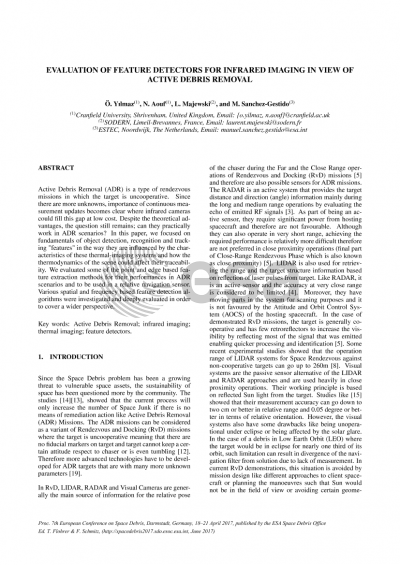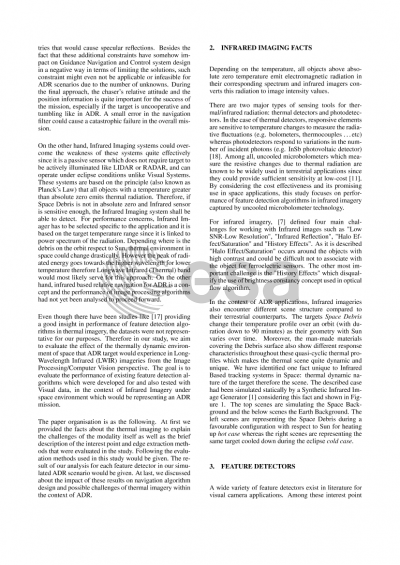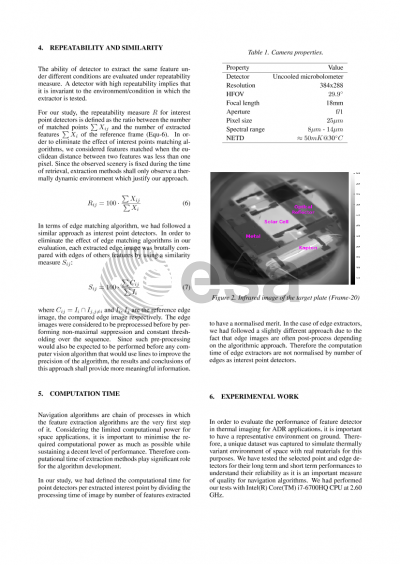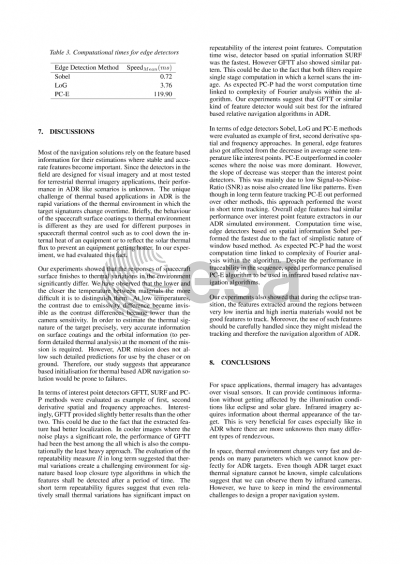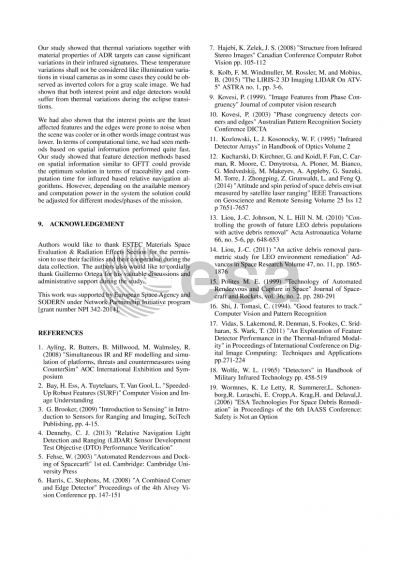Document details

Abstract
Active Debris Removal (ADR) can be considered as one type of rendezvous missions in which the target is uncooperative and also does not have 3-axis stabilisation on board. Since there are more unknown parameters than a cooperative rendezvous mission, continuous measurement updates are important for the success of relative navigation of the chaser. Conventional sensor systems either provide interrupted information due to target illumination (i.e. visual cameras) or demand high power/mass budgets (i.e. LIDAR). On the other hand, infrared cameras could be the low cost solution. Despite the theoretical advantages of this type of sensors, the question still remains; can they practically work in ADR scenarios? In this paper, we focused on fundamentals of object detection, recognition and tracking “features” in the way they are influenced by the characteristics of these thermal-imaging systems and how the thermodynamics of the scene could affect their traceability. We evaluated some of the point and edge based feature extraction methods (i.e. Sobel, Laplace of Gaussian and Phase Congruency based methods) for their performances in ADR scenarios captured with infrared cameras and to be used in a relative navigation sensor. Various spatial and frequency based feature detection algorithms were investigated and deeply evaluated in order to cover a wide perspective. Tests had been conducted by using infrared scenes of a sampling plate with different spacecraft surface coatings under thermal-vacuum environment with temporal variation of temperatures. We had particularly studied the thermal transition regions of the orbit as the infrared imagery environment were significantly differed from their terrestrial counterparts. During these tests we had observed that the infrared signatures of “Very Low Thermal” inertia materials (i.e. Kapton representing outer part of multi-layer insulator which is commonly used for spacecraft thermal insulation) significantly altered comparing to their surrounding materials with higher thermal inertia. As a result of this, new features started to appear around the boundaries of materials when their thermal inertia significantly differs. This unique nature of infrared imagery pointed out that the variations in the distribution of features would not be necessary due to motion of the target or chaser. Overall the performance of edge feature detectors in terms of traceability had been similar during our tests. However, phase congruency based edge detection method provided qualitatively better and more edges than Sobel and Laplacian of Gaussian based methods in low contrast images where the temperature variations of the scene were small. In terms of point features, Good Feature To Track (GFTT) performed slightly better than Speeded Up Robust Features (SURF) and Phase Congruency method within the thermally dynamic environment of ADR target.
Preview
